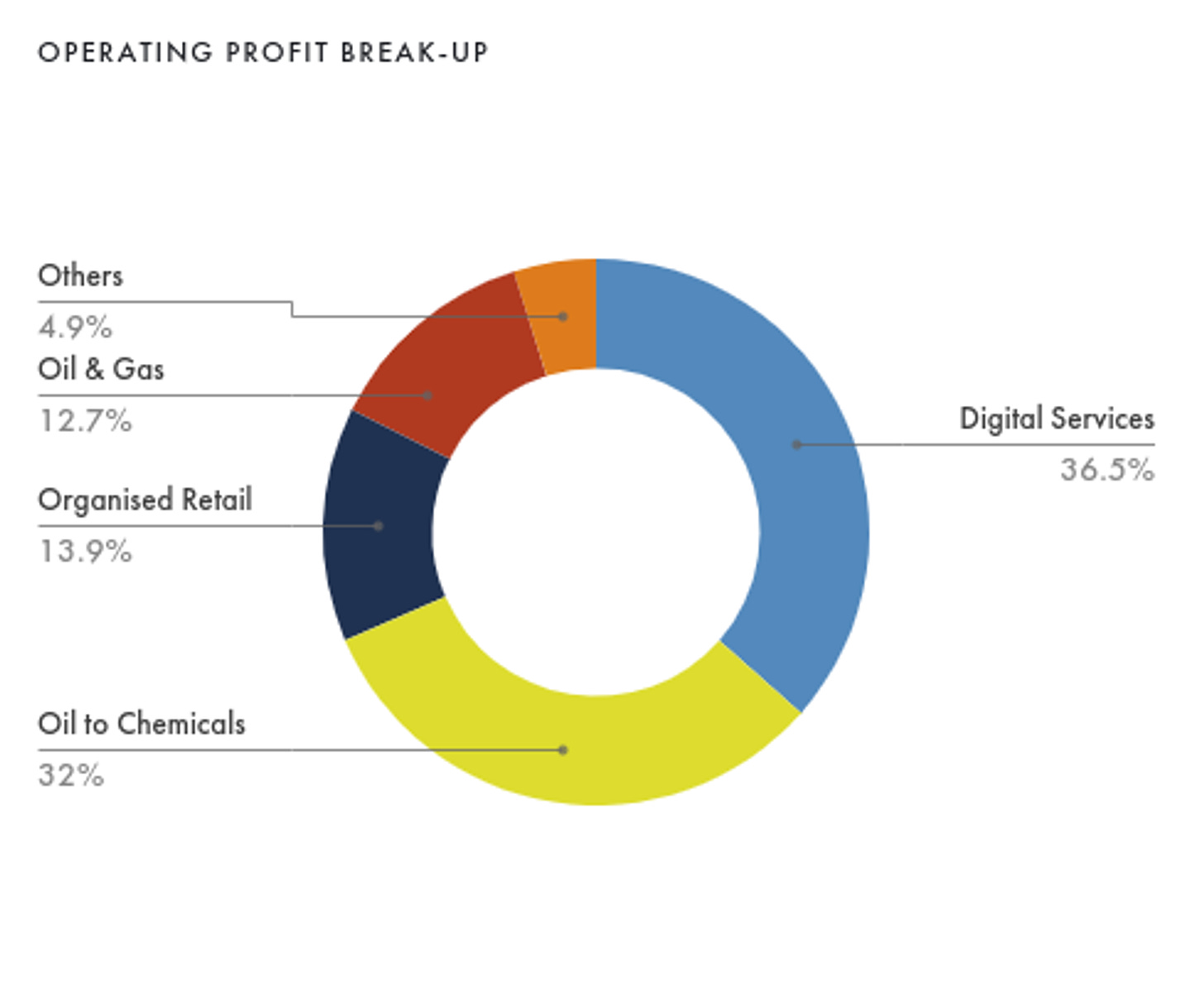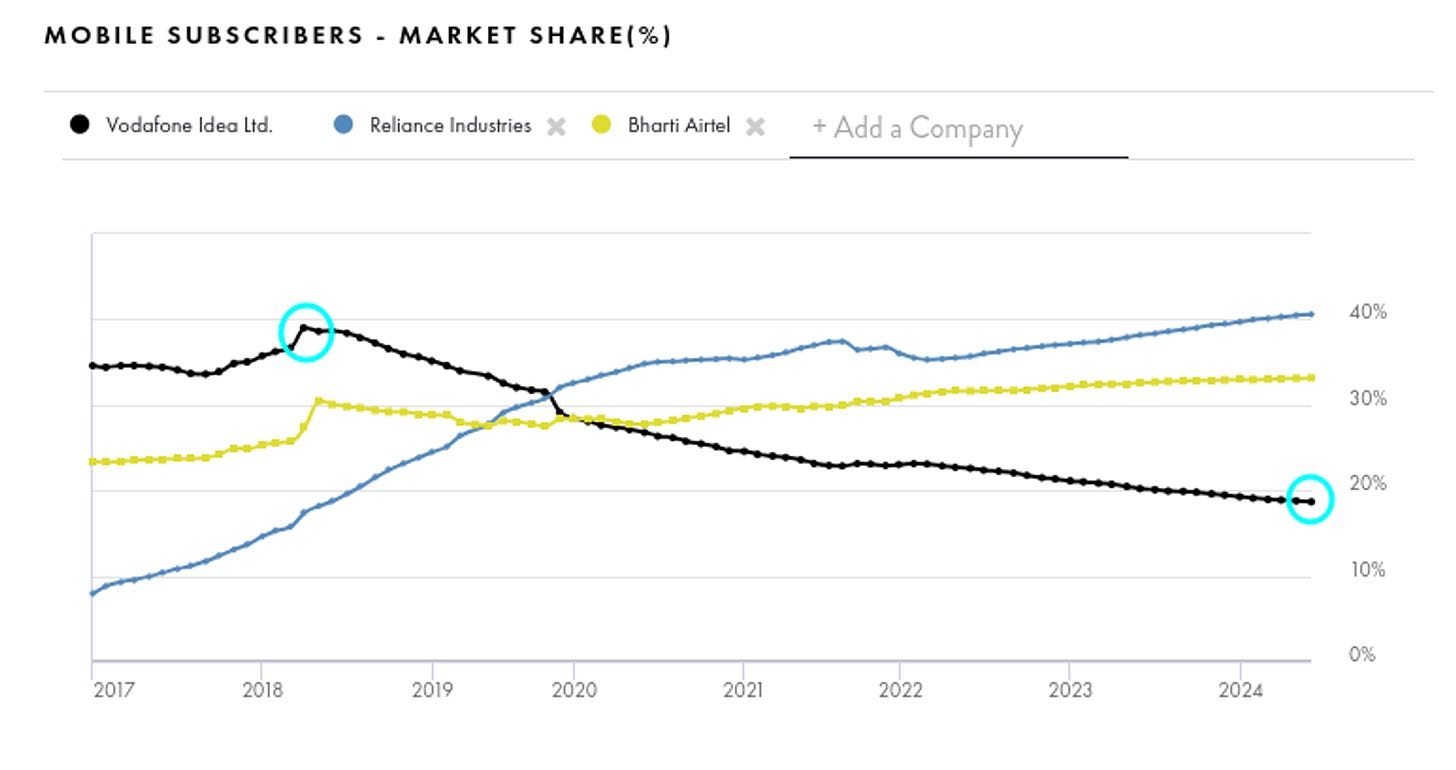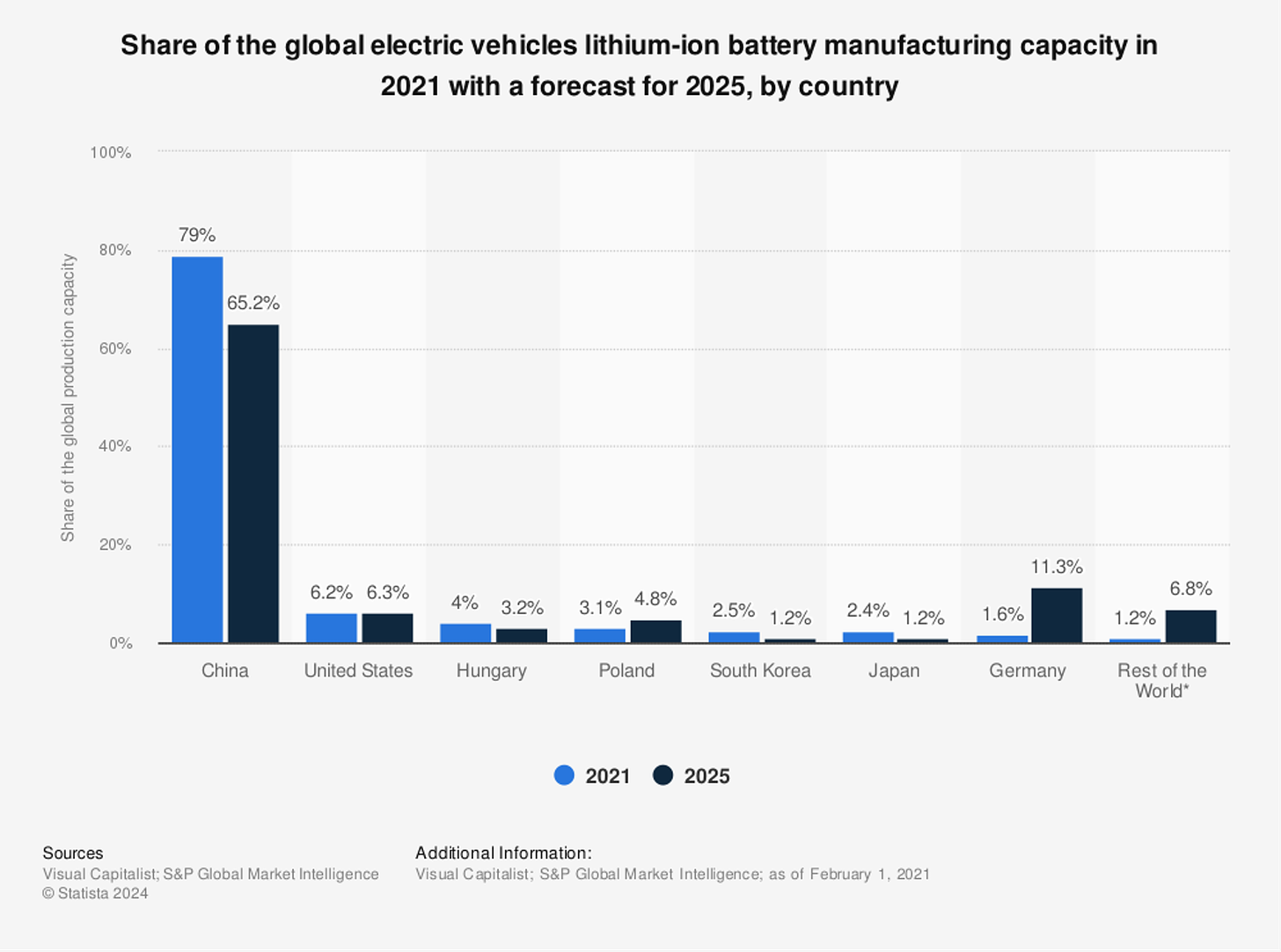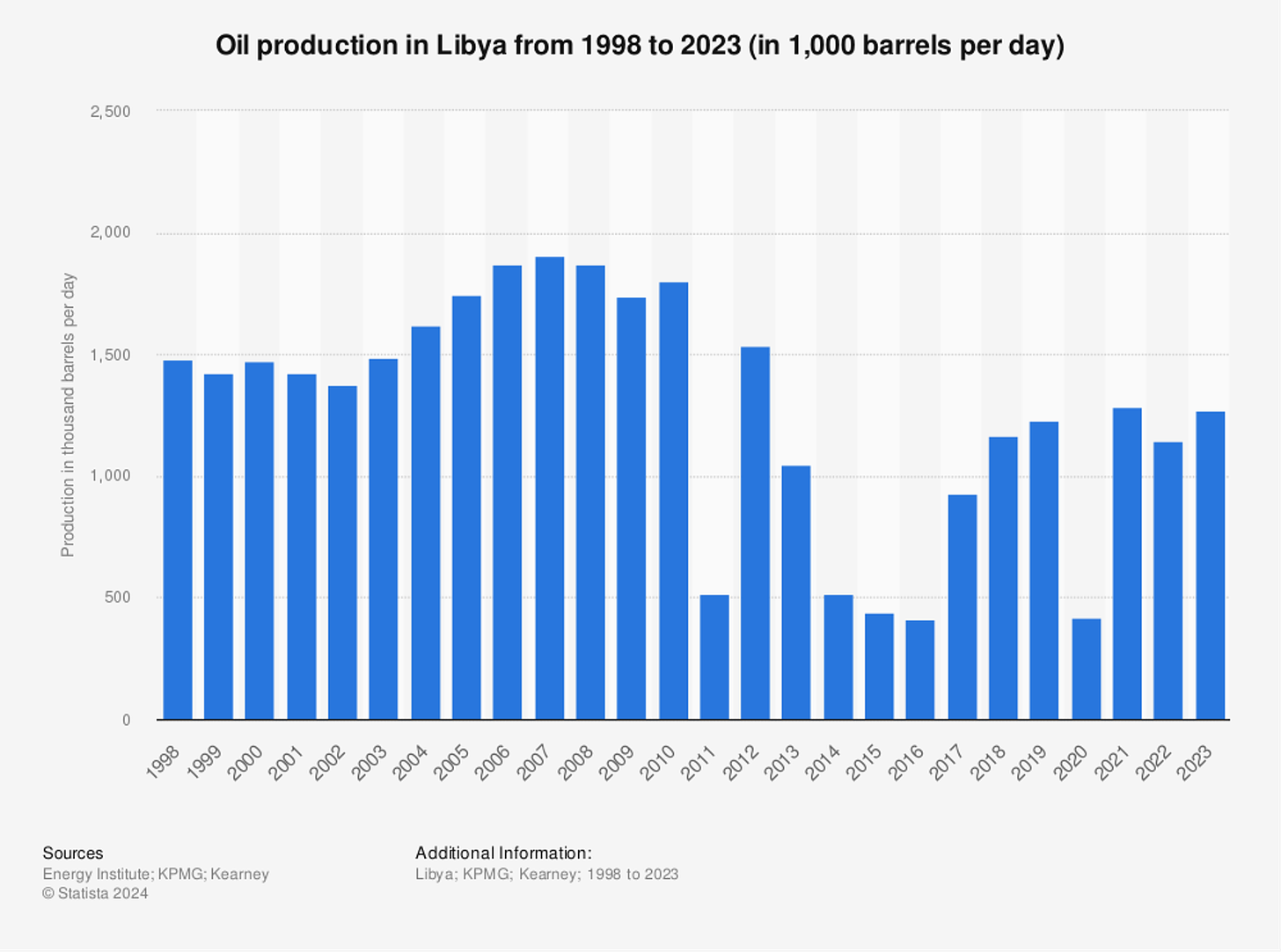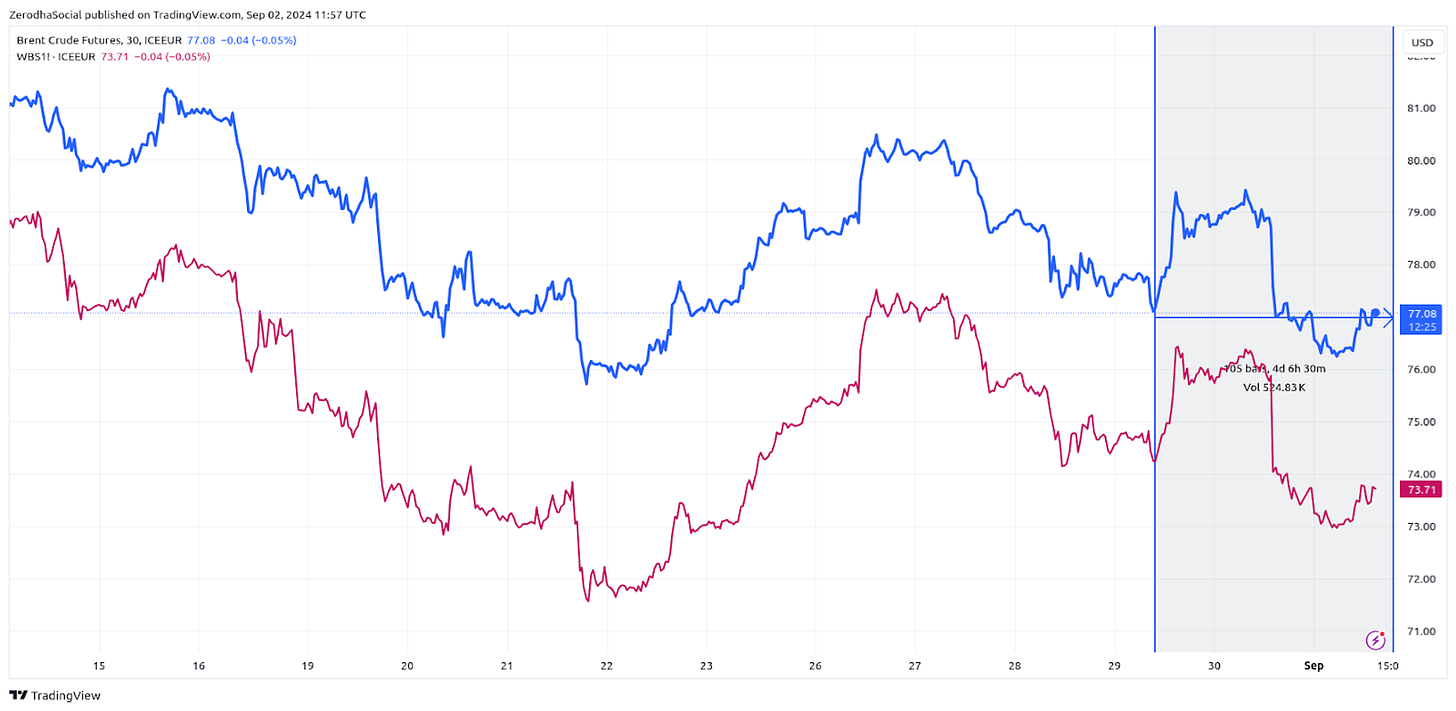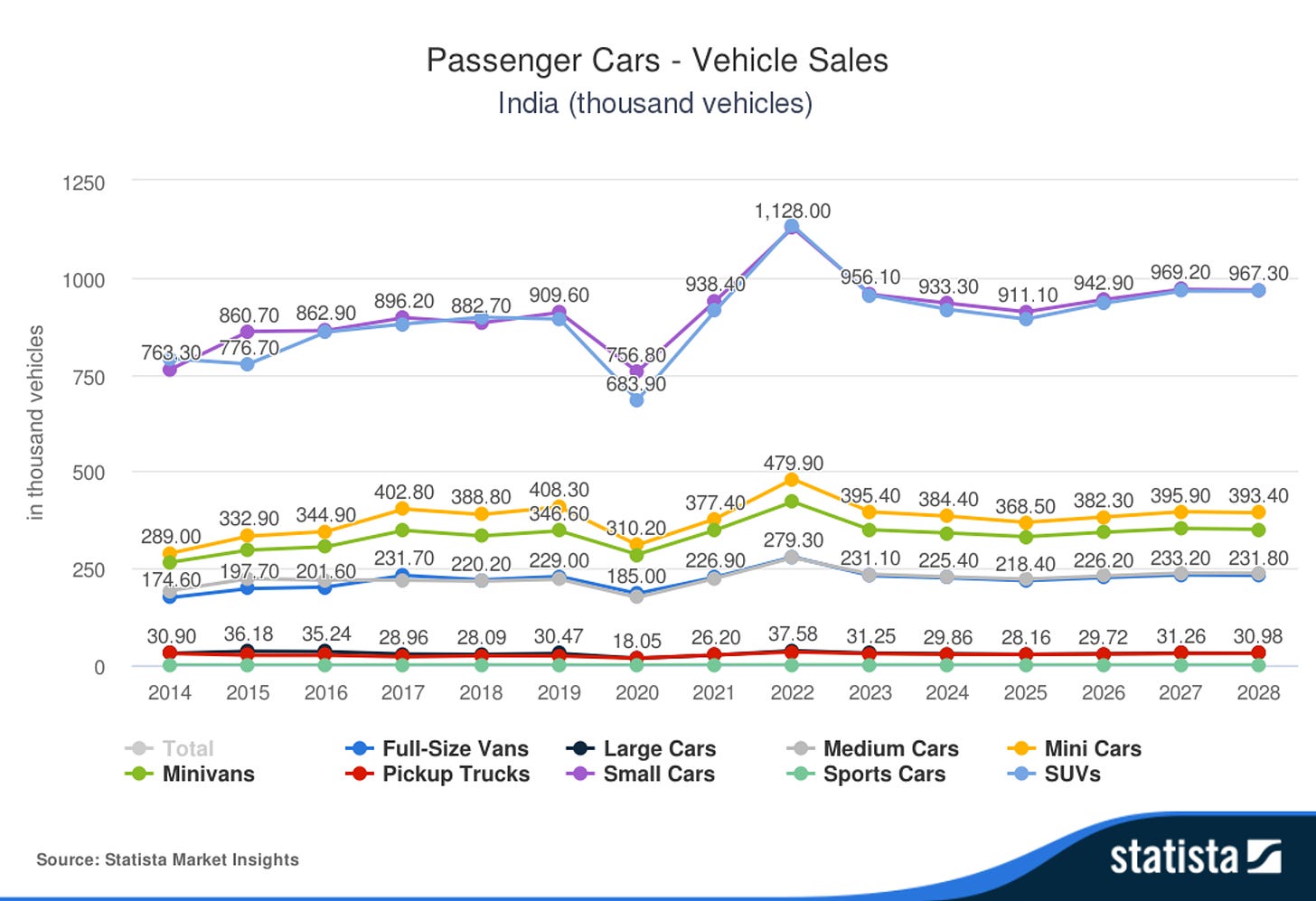Our goal with The Daily Brief is to simplify the biggest stories in the Indian markets and help you understand what they mean. We won’t just tell you what happened, but why and how too. We do this show in both formats: video and audio. This piece curates the stories that we talk about.
You can listen to the podcast on Spotify, Apple Podcasts or wherever you get your podcasts and video on YouTube.
Today on The Daily Brief:
- Reliance wants to go green…ish
- The global oil markets need nimbu and mirch
- Auto manufacturers vs Auto dealers
Reliance wants to go green…ish
Reliance Industries, one of India’s largest industrial conglomerates, boasts a market capitalization exceeding ₹20 lakh crore and holds a substantial 9% weightage in the Nifty 50. The company’s diverse portfolio spans from oil and gas to retail, telecommunications, and new energy.
Across its various business segments, Reliance reported ₹9.3 lakh crore in sales and ₹77,000 crore in profits over the past year. Given its size and extensive presence, any change in Reliance’s operations has a ripple effect across the Indian economy. During their recent Annual General Meeting (AGM), several key insights were revealed.
Source: Tijori
Oil to Chemicals (O2C)
Reliance’s O2C business remains its largest revenue generator, but it’s adapting to a changing world. The global pressure on oil producers and refiners to reduce emissions is pushing companies to move away from fossil fuel-based activities. Government-owned refiners like Indian Oil, Bharat Petroleum, and Hindustan Petroleum are making significant investments in petrochemicals to shift from the low-margin oil refining business. Reliance seems to be following a similar path.
Last year, the company processed 60 variants of crude oil, despite volatile crude prices. Reliance is also expanding into speciality chemicals like PVC, which are essential for India’s growing construction sector. This move aligns with the government’s focus on self-sustainability and infrastructure development.
Sustainability is becoming a focus for Reliance, albeit within the constraints of the industry. The company now recycles 2 billion plastic bottles annually and aims to increase this number to 5 billion next year. Despite the global pressure to reduce fossil fuel use, Reliance is finding ways to make its O2C business relevant for the future. This includes investing in advanced technologies and exploring more efficient production methods.
Retail
Reliance Retail operates in an increasingly dynamic environment. On one hand, there is a rising class of mass affluent Indians with growing spending power, along with trends like premiumization and the rapid penetration of digital payments. On the other hand, there’s the rise of quick commerce, offering instant convenience—a sector where Reliance Retail is also making strides. In this environment, Reliance Retail operates 18,000 stores across India.
Interestingly, the jewellery market is attracting attention from major players, with the Birla Group entering the market with “Indriya,” and now Reliance is also stepping into this segment.
Reliance is blending online and offline shopping experiences, much like Amazon, but with the advantage of a vast network of physical stores. By partnering with 4 million small shops, Reliance is turning potential competitors into allies. A significant highlight from the AGM was the company’s aggressive expansion plan to double its revenue in the next 3-4 years.
Digital Services (Jio)
The Indian telecom sector has undergone a seismic shift in the past decade, largely due to Reliance Jio’s disruptive entry in 2016, offering ultra-low-cost 4G data plans. For context, in 2018, Vodafone was the market leader with 35-40% of mobile subscribers. Fast forward to today, and Vodafone’s market share has plummeted to less than 20%, all thanks to Jio.
Source: Tijori
After years of intense competition and massive investments in infrastructure, particularly in 5G networks, telecom operators are now focusing on profitability. Jio recently led the way in increasing tariffs, with Vodafone and Airtel quickly following suit, signalling an industry-wide shift towards boosting Average Revenue Per User (ARPU). Last month, rating agency CRISIL projected that the ARPU for the industry is set to rise to ₹225 from the current ₹182. Higher ARPUs are crucial for recovering and sustaining the massive investments required for expanding and upgrading network infrastructure, especially as India races to roll out 5G services nationwide.
Jio has transformed from a disruptive telecom upstart to a comprehensive digital services provider, with ambitions that extend far beyond traditional telecom services. Some key highlights include:
- Jio now has 490 million subscribers, with its network handling 8% of global internet traffic.
- The company completed India’s fastest 5G rollout, with 130 million 5G users already.
- Recent tariff increases aim to boost average revenue per user, a key metric for telecom profitability.
- Jio is expanding beyond mobile services into home broadband and business solutions.
- The introduction of JioBrain signals Jio’s ambition to be a leader in AI services, not just a network provider.
New Energy
As the world moves away from fossil fuels towards more sustainable energy sources, Reliance is positioning itself to not be left behind. With a global push for cleaner, renewable energy, Reliance—a giant in oil and petrochemicals—is making a bold move into the renewable energy sector. Adani, another major Indian conglomerate, has already established a significant presence in solar and wind energy.
Reliance’s entry into the renewable energy sector is significant:
- The company plans to start manufacturing solar panels this year, reducing India’s reliance on imports, particularly from China.
- A large battery factory is being built, which could support India’s electric vehicle ambitions—currently, China dominates the battery market, producing over 75% of the world’s EV batteries.
Source: Statista
- The company is investing in green hydrogen, seen as a potential replacement for fossil fuels in industries like steel-making.
Reliance aims for this new segment to match its oil business in profitability within the next 5-7 years, an ambitious but strategic goal.
Oil & Gas Exploration and Production (E&P)
While currently a smaller segment, Reliance’s Oil & Gas Exploration and Production (E&P) business is growing significantly. The Krishna Godavari Dhirubhai 6 (KG-D6) field, a deep-water natural gas field located off the eastern coast of India in the Bay of Bengal, now produces 30% of India’s natural gas. This makes Reliance a major player in domestic energy production, enhancing India’s energy security and reducing dependence on gas imports.
Reliance is also using new drilling techniques to extract more gas, potentially unlocking additional domestic energy sources.
The global oil markets need nimbu and mirch
Crude oil prices are back in focus, and this time, it’s due to some unfolding drama in Libya. For context, Libya has been in a state of constant turmoil ever since its long-time leader, Muammar Gaddafi, was deposed in a US-led military operation supported by NATO allies like France and the UK back in 2011.
Here’s why this matters
Libya holds Africa’s largest proven oil reserves and produces about 1 million barrels of oil per day. Currently, over 60% of this production has stopped, and even more supply is at risk. To put this in perspective, the world consumes over 100 million barrels of crude every day, and even small disruptions can significantly impact prices. For India, which imports over 80% of its oil, fluctuations in the global oil market can have a substantial impact on the economy.
Source: Statista
Let’s break down what’s happening
Since Gaddafi was overthrown in 2011, various factions have been vying for power in Libya. Despite the United Nations’ efforts, peace has been elusive, with regular outbreaks of violence. Often, the groups fighting for control of Libya have seized oil fields as leverage—and that’s exactly what’s happening now.
The latest crisis began when Prime Minister Abdul Hamid Dbeiba’s internationally recognized government in the west attempted to dismiss Sadiq al-Kabir, the governor of Libya’s central bank. Al-Kabir is being accused of mismanagement and excessive spending. Reports suggest that the central bank governor has now fled the country due to threats and harassment.
In response, the eastern government, led by Prime Minister Osama Hammad and supported by various military leaders, has closed oil fields critical to Libya’s economy. They are demanding al-Kabir’s reinstatement.
Here’s the interesting part; The Central Bank of Libya collects all the revenue from the country’s oil production and allocates it to various regions. This has become a major point of contention among the different factions, all of whom want a share of the revenue.
This latest disruption is happening at an interesting time for oil prices. Let us explain:
- After a brief spike, Brent crude prices dropped to around $77 per barrel, and WTI crude fell to $73 per barrel. Strange, right? You’d expect prices to rise when supply is disrupted.
- We discussed this a couple of weeks ago—the demand for crude has been weak this year, primarily due to a slowdown in the Chinese economy.
- Crude demand has remained weak despite the Organization of Petroleum Exporting Countries (OPEC) keeping close to 6 million barrels of supply off the market.
- Another factor contributing to lower crude prices is speculation that OPEC might start unwinding some of those supply cuts in October, which could add roughly 2.2 million barrels of crude to the market.
So far, crude prices have remained relatively stable, preventing our fuel bills from soaring. But it’s remarkable how many disruptions to crude supply we’ve witnessed in the past few years—from the Russian invasion of Ukraine to conflicts in the Middle East, and now this situation in Libya. The global oil market remains as unpredictable as ever, and we’ll have to closely watch how this Libyan crisis unfolds in the coming weeks.
Auto manufacturers vs Auto dealers
Selling automobiles is a tricky business, and one of the main challenges is inventory management—essentially, the number of vehicles stored in warehouses ready to be sold. Inventory optimization is crucial because both automobile dealers and manufacturers bear significant costs for storage space. They also incur expenses to finance the vehicles sitting in their warehouses before they’re sold, not to mention the depreciation of unsold vehicles.
Currently, India’s automobile industry is grappling with a high inventory problem—there’s an excess of stock but low demand. Passenger vehicle sales are expected to decline by 6-8% year-on-year, according to an estimate by Motilal Oswal. Excluding two-wheelers, sales remain weak across the board.
Interestingly, there’s a heated debate between auto manufacturers and auto dealers over the severity of this inventory problem. The Federation of Automobile Dealers Associations (FADA) claims that the current automobile inventory is around 70 days, which is alarmingly high. On the other hand, the Society of Indian Automobile Manufacturers (SIAM) estimates this number to be just 38 days.
So, who’s right?
The stark difference in these inventory estimates arises from the fact that both associations calculate the inventory differently. Automobile manufacturers base their numbers on the cars they produce, while auto dealers use sales data and registration information to calculate theirs.
Ideally, these numbers should align, but that’s not the case. It seems likely that manufacturers may be downplaying the situation to keep market sentiment positive, while dealers might be amplifying it to avoid being forced to take on more vehicles than they can sell. However, it’s tough to determine who’s right. What’s clear is that there is an inventory problem in the automobile sector today.
Take Mahindra & Mahindra, for example. In their April conference call, they mentioned a waiting period of more than 2-3 months for some of their models. But now, that waiting period has shrunk to as little as 2-3 days in most cases!
To clear out inventory and boost sales, automobile companies and dealers are offering deep discounts and promotional schemes—far more than they typically would. For instance, Maruti’s discounts have decreased by 10% month-on-month (MoM) for the ARENA channel but increased by 5-7% MoM for the NEXA channel. Tata Motors increased discounts on its best-selling compact SUV, Punch, to ₹20,000 from ₹10,000 last month, while the Nexon continues to see a discount of up to ₹1 lakh on some variants, according to the same Motilal Oswal report.
From the dealers’ perspective, this strategy makes a lot of sense. If there are about 7 lakh unsold cars sitting in warehouses, dealers are losing crores each month just to hold them! That’s a substantial amount of money to lose, which justifies the deep discounting.
However, it’s not that dealers can’t manage inventory. As an industry practice, most dealers can sustainably hold inventories of 30-45 days, especially around the festive season, anticipating strong sales during this period. But this year, inventory levels have ballooned to 2.5-3 months, leading to significant challenges.
As a proposed solution, FADA has written to SIAM twice in the last two months, urging automakers to reduce the number of vehicles they send to dealerships to better align with the weak demand. Additionally, FADA is advocating for the continuation of the FAME-3 policy to boost demand for electric vehicles (EVs). FAME policies are subsidies and incentives provided by the government to promote EV adoption. FADA is also pushing for a reduction in the GST on entry-level passenger cars and two-wheelers from the current rate of 28% to make vehicles more accessible.
In the meantime, the automotive industry is hopeful that the upcoming festive season will bring some relief to the current low-demand situation. It will be interesting to see how this sector navigates these challenges in the coming months, and we’ll continue to monitor and report on any developments.
Thank you for reading. Do share this with your friends and make them as smart as you are ![]()
